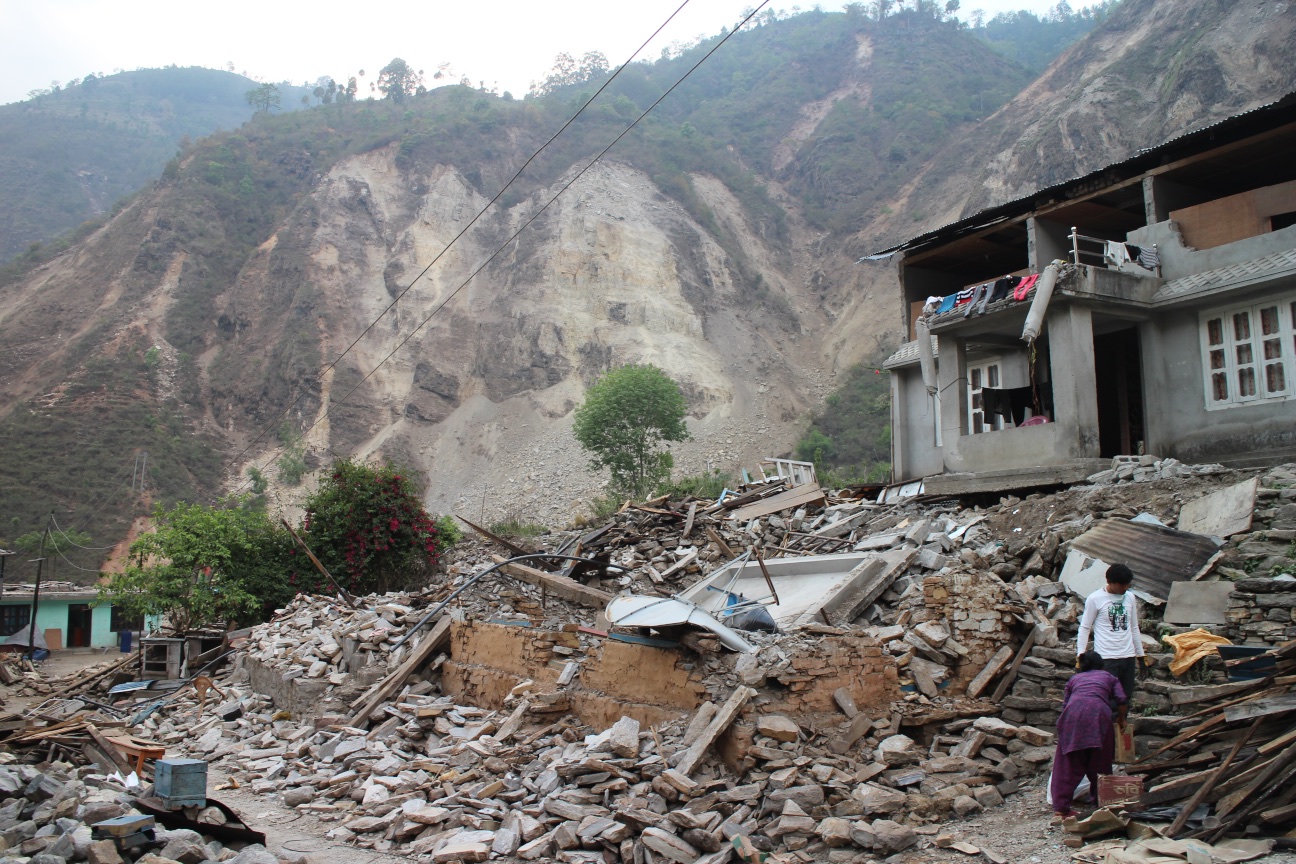Have you ever wondered what caused the tragic and devastating landslide in Nepal? In this article, we will explore the various causes and triggers behind this catastrophic event.
From geological factors to human activities, we will delve into the intricacies of this natural disaster, shedding light on the interconnectedness between our actions and the environment.
Come along on this journey as we uncover the circumstances that led to this heartbreaking landslide in Nepal.
Causes of the Devastating Landslide in Nepal
Nepal, a picturesque country nestled in the Himalayas, is no stranger to natural disasters. Unfortunately, one of the most devastating disasters that have plagued this beautiful nation is landslides. These catastrophic events can cause unimaginable loss of life, destruction of infrastructure, and displacement of communities. In order to understand the factors contributing to the devastating landslides in Nepal, we need to take a closer look at the various causes and triggers that have been identified.

Tectonic Activity
One significant cause of landslides in Nepal is tectonic activity. Nepal lies in a seismically active region characterized by the convergence of the Indian and Eurasian tectonic plates. The geological forces resulting from the collision of these plates contribute to the formation of fault lines and plate movements. When stress accumulates along these fault lines, it can lead to earthquakes and subsequent landslides.
Fault Lines and Plate Movements
Nepal is crisscrossed by numerous fault lines, where the Earth’s crust is fractured. These fault lines act as zones of weakness, making them prone to slippage during seismic events. When the accumulated stress along these fault lines exceeds the strength of the rocks holding them together, it can result in sudden movement and displacement, triggering devastating landslides.
Earthquakes and Aftershocks
Earthquakes, which are a direct consequence of tectonic activity, can also trigger landslides. The shaking caused by earthquakes can destabilize slopes, causing weak or loose soil to slide downhill. Furthermore, aftershocks, which frequently follow major earthquakes, can further weaken already vulnerable slopes and contribute to additional landslides.
Heavy Rainfall
Nepal experiences a significant amount of rainfall, especially during the monsoon season, which typically spans from June to September. The heavy rainfall during this time of the year significantly increases the likelihood of landslides.
Monsoon Season
The monsoon season brings with it intense rainfall, as moisture-laden winds from the Indian Ocean collide with the Himalayan mountain range. This abundant rainfall saturates the soil, making it heavier and more prone to sliding. The added weight combined with gravity can destabilize slopes, leading to devastating landslides.
Intense Rainfall Events
Aside from the monsoons, Nepal is also susceptible to intense rainfall events throughout the year. These intense downpours can occur due to weather systems such as cyclones or low-pressure systems, which can result in a concentrated deluge of rain in a short period. The rapid infiltration of water into the soil, especially in areas with poor drainage, can weaken the slope’s stability and trigger landslides.

Geological Composition
The geological composition of Nepal plays a crucial role in the prevalence of landslides. The presence of loose and unstable soil, combined with the region’s steep slopes, contributes to the vulnerability of the landscape.
Presence of Loose and Unstable Soil
Nepal’s topography consists of a variety of soil types, ranging from cohesive clay to loose rock and debris. These loose and unstable soils are highly susceptible to displacement and erosion when subjected to external forces such as excessive rainfall or earthquakes. The lack of cohesion and interlocking particles makes them more prone to sliding and triggering landslides.
Steep Slopes and Erosion
The rugged terrain of the Himalayas means that many areas in Nepal have steep slopes. Steep slopes increase the gravitational force acting on the soil, making it more susceptible to sliding. Moreover, the combination of heavy rainfall and the lack of vegetation cover accelerates erosion, further increasing the instability of these slopes. The erosion weakens the soil’s strength and cohesion, making landslides more likely to occur.
Deforestation
Deforestation, often driven by human activities, has significantly impacted Nepal’s landscape and amplified the risk of landslides. The removal of vegetation cover destabilizes the soil and alters the natural equilibrium of the ecosystem.
Removal of Vegetation Cover
The indiscriminate felling of trees for timber, agriculture, or urbanization purposes has led to the widespread deforestation of Nepal’s hillsides. Vegetation plays a crucial role in stabilizing slopes by providing root systems that bind the soil together. The removal of this vegetation cover exposes the soil to erosion, significantly increasing the likelihood of landslides.
Soil Erosion
Deforestation accelerates soil erosion, as the roots of trees and plants that once held the soil in place are no longer present. As rainfall washes over the bare slopes, it carries away the loosened soil particles, further destabilizing the landscape. Increased soil erosion weakens the stability of slopes, making them more susceptible to landslides.
Loss of Root Systems
The root systems of trees and plants play a vital role in maintaining the cohesion and stability of the soil. These intricate networks of roots bind the soil particles together, effectively resisting the forces of gravity and erosion. When trees are removed through deforestation, the loss of these root systems significantly weakens the soil’s ability to withstand external pressures, increasing the risk of landslides.

Road Construction
While road construction is essential for improving connectivity and transportation in Nepal, it can inadvertently contribute to the occurrence of landslides.
Cutting into Hillsides
Road construction often involves cutting into hillsides to create a path for vehicles. This excavation disturbs the natural balance of the slope, removing the support provided by rocks and vegetation. The exposed slope becomes vulnerable to erosion and instability, increasing the likelihood of landslides.
Altering Natural Drainage Patterns
Road construction can alter the natural drainage patterns of an area, redirecting water runoff onto slopes instead of allowing it to flow naturally. The increased volume of water flowing down the slopes can lead to soil saturation, resulting in a decrease in slope stability. Additionally, the improper design and construction of drainage systems can further exacerbate the risk of landslides.
Mining Activities
Mining activities, aimed at extracting valuable minerals and resources from the earth, can also contribute to the occurrence of landslides in Nepal.
Excavation and Disturbance of Soil
Mining involves the excavation and removal of large quantities of soil and rocks, altering the equilibrium of the landscape. The disturbance caused by the extraction process weakens the stability of slopes, often resulting in landslides in and around mining areas. The removal of materials from the slopes can also affect the distribution of weight, further compromising the stability of the terrain.
Destabilization of Slopes
The excavations created by mining activities can destabilize surrounding slopes. The sudden removal of material lowers the factor of safety and disturbs the balance. As a result, the weakened slopes may fail and collapse, leading to devastating landslides. It is crucial to implement proper engineering and rehabilitation practices to reduce the risk associated with mining activities.

Climate Change
Climate change is having a profound impact on Nepal, with potentially severe implications for landslide occurrence.
Increased Intensity of Extreme Weather Events
Climate change is leading to an increase in the intensity and frequency of extreme weather events, including intense rainfall and storms. These events can trigger landslides by saturating the soil, increasing groundwater levels, and overwhelming natural drainage systems. As climate change continues to alter precipitation patterns, the risk of landslides in vulnerable areas may further increase.
Melting Glaciers and Glacial Lake Outburst Floods
Nepal’s mountainous regions are home to numerous glaciers. Global warming is causing these glaciers to melt at an alarming rate, leading to the formation of glacial lakes. In some cases, these glacial lakes can become unstable and eventually burst, releasing huge volumes of water and debris downstream. The impact of such glacial lake outburst floods can trigger devastating landslides along the path of the floodwaters, exacerbating the loss of life and infrastructure.
Poor Construction Practices
Inadequate construction practices and weak infrastructure can also contribute to the severity of landslides in Nepal.
Improper Building Codes
In some areas of Nepal, particularly in remote and rural regions, construction practices may not adhere to proper building codes and standards. This lack of regulation can result in the construction of buildings on unstable slopes or with inadequate foundation designs, increasing their vulnerability to landslides. The absence of robust construction practices compromises the resilience of infrastructure during landslide events.
Weak Infrastructure
Poorly constructed roads, bridges, and other infrastructure can exacerbate the impact of landslides. In Nepal, where terrain and weather conditions pose significant challenges, infrastructure needs to be built with robust engineering and planning in mind. Weak infrastructure cannot withstand the forces exerted by landslides, leading to their destruction and loss of life.

Human Settlements in Vulnerable Areas
The presence of human settlements in vulnerable areas further intensifies the impact of landslides. Encroachment into high-risk zones increases the vulnerability of communities to the destructive power of landslides.
Nepal’s challenging topography and limited available land often leave communities with no choice but to settle in areas prone to landslides. These settlements are often located on steep slopes with limited access to safe housing and infrastructure. As a result, when landslides occur, they can cause significant loss of life and damage to property.
Lack of Early Warning Systems
The absence or inadequacy of early warning systems in Nepal poses a considerable challenge in mitigating the impact of landslides.
Inadequate Monitoring and Detection
Nepal’s rugged topography and limited resources often make it difficult to establish comprehensive monitoring and detection systems. The lack of real-time data on slope stability and rainfall patterns hinders timely responses to the risk of landslides. Without accurate information, it is challenging to issue warnings and evacuate vulnerable communities before a landslide occurs.
Delayed Response and Evacuation
The absence of efficient early warning systems can lead to delayed responses and evacuations. In the absence of timely information, communities may not have sufficient time to prepare for an impending landslide or safely evacuate to higher ground. This delay in response can significantly contribute to the loss of life during landslide events.
In conclusion, the devastating landslides in Nepal are the result of a complex interplay of various natural and human-induced factors. Tectonic activity, heavy rainfall, geological composition, deforestation, road construction, mining activities, climate change, poor construction practices, human settlements in vulnerable areas, and the lack of early warning systems all contribute to the occurrence and severity of landslides.
In order to mitigate the risk posed by landslides, it is crucial to implement effective measures such as improved land-use planning, reforestation efforts, adherence to building codes, and the establishment of robust early warning systems. Only through proactive measures can Nepal work towards minimizing the devastating impacts of future landslides and ensure the safety and well-being of its communities.

